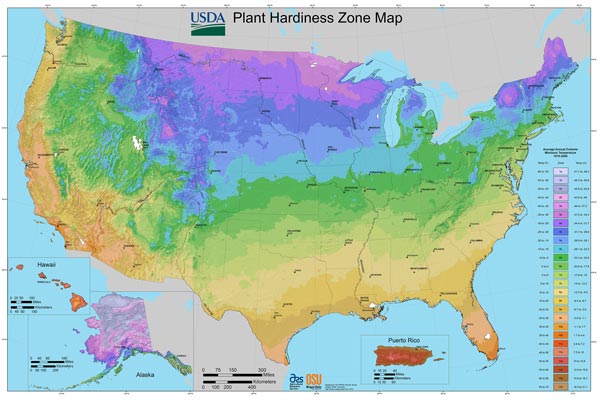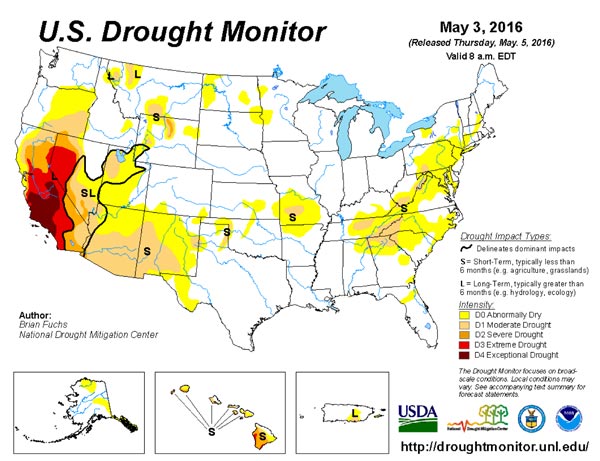As Westerners struggle under water-use reductions and Midwesterners, East Coasters, and Southerners grapple with storm-ravaged yards, many are rethinking the traditional American landscape. Both garden professionals and scientists are working on materials that can better survive drought and extreme weather, as home owners increasingly question the importance—and even the underlying ethics—of maintaining a perfectly manicured, green lawn.
Smart landscaping choices do more than help a yard stand out to buyers; they protect the environment and preserve natural resources. Landscape designer Michael Glassman, based in Sacramento, Calif., has been advising clients to do their part by paying attention to their rainfall levels and other climate issues, including the characteristics of their own property. He says appealing to all the senses, rather than assuming buyers just want a lawn, is the best approach. “You can plant a colorful arrangement of red lipstick salvia, lavender, Flower Carpet roses, and rosemary in an oversized pot and have a result that will smell wonderful, too. People respond more to this than they do only to grass,” Glassman says.
Home owners can begin by looking at the U.S. Department of Agriculture’s plant hardiness zone map to see what works best in their area. Glassman stresses the need to fully understand one’s own yard rather than blindly aim to duplicate a neighbor’s or an attractive backyard photo in a magazine. Many factors affect water levels, including topography (where slopes create runoff), sun and shade (which change evaporation rates), and soil composition (affecting retention and saturation). “Architectural features such as pergolas, patios, and loggias can create microclimates,” Glassman says.

Visit the USDA site for zone information specific to your area.
Experts at plant nurseries can help develop a realistic garden palette for buyers and even for sellers wanting to spruce up their yards before listing. “Less watering and maintenance can become great selling points,” says Lewis Vine, founder of Grounds Guys in Chula Vista, Calif. Here are four key landscaping categories home owners can focus on.
Lawn. A green lawn may be the quintessential eye candy of curb appeal, but it’s often an unrealistic goal, says Kris Kiser, president of the Outdoor Power Equipment Institute in Alexandria, Va. Still, a brown, spotty lawn may well “green up” when conditions improve. The most important factor is choosing the right species, according to the National Association of Landscape Professionals in Herndon, Va. Today, many grasses have been developed specifically to thrive in drought conditions. For this reason, California home owners often favor tall fescue, a cool-climate grass, or Bermuda grass, for those in warmer areas.
At its own outdoor site in San Francisco, architecture firm Perkins+Will is testing different drought-tolerant fescues and bunch grasses to see which fare best, says landscape architect Jennifer Cooper. “Many grasses have plumes and wonderful dramatic colors, and when they dry in the fall, their seedheads will rustle in the wind,” she says. She also suggests mowing lawns less often, since longer blades shade shorter parts of the lawn from burning in the sun. And when you do mow, Kiser suggests leaving cuttings on the ground, since they’re a “terrific natural fertilizer,” Kiser says. In Utah, landscape designer Laurie Van Zandt of The Ardent Gardener prefers an Idaho fescue seed mix that needs watering only every 10 days or so. And scientists keep introducing newer, hardier species. The University of California at Davis debuted a “UC Verde” Buffalograss that uses 70 percent less water than traditional grass.
Then there’s the option of replacing the lawn altogether. Ground covers can significantly reduce the amount of water used and generally don’t require mowing. UC Davis scientists recently developed Kurapia, a ground cover with white flowers that works in various soils. Glassman recommends Flower Carpet roses, a lawn replacement option that requires little watering and offers a colorful display.
Though it’s traditionally considered less appealing, synthetic turf has come to look more realistic, and Glassman says prices have dropped 30 to 40 percent at big-box stores in the last few years. He advises home owners to purchase turf in person, though, as the quality varies greatly. In northern California’s Palo Alto area, landscape architect Jarrod Baumann of Zeterre Landscaping says, “huge amounts of artificial turf are showing up as home owners become competitive over having as little lawn as possible. We probably use it now on 50 percent of our projects.”
Plant materials. Drought is a problem in pockets all over the country. However, it’s equally important to look at resilience under a variety of conditions, says Chicago landscape architect Ryan Kettelkamp, a principal at Kettelkamp & Kettelkamp Landscape Architecture. “Winters that aren’t cold enough, like this year, may bring us more insects in spring. During Hurricane Katrina, winds stripped beloved live oaks of leaves and branches in many Louisiana yards. And seasonal cold blasts have shocked fruit trees and destroyed their production in Florida in years past,” he says. To better control the effects of weather, Kettelkamp and his wife Claire, a landscape architect, have shifted to gardening more in pots. “We grew tomato plants—one reached 7 feet tall—plus onions, English peas, lettuce, squash, and more. When a storm was brewing, we picked up the pots and brought them into protected locations so our crop wasn’t decimated,” he says. Another major concern is invasive species like the buckthorn shrub in Chicago, which moves into woods, builds a dense wall, and excludes light so other plants can’t grow, Kettelkamp says.
Hardscape. While paving over lawn might seem the best option for frustrated sellers, advise your clients to take a balanced approach. Most experts recommend permeable driveways, walks, and other hardscapes that allow water to percolate into the ground, rather than send it into streets and sewers. The water can nourish ground cover and plants and also mitigate neighborhood flooding. Glassman suggests permeable pavers, pea gravel, and brick set atop sand or gravel, rather than using brick and mortar to set a patio. Opting for smaller swaths of lawn between paved areas is another smart tactic that adds a softer touch, Perkins+Will’s Cooper says.
Irrigation. Watering systems available today include some so high-tech they switch on and off automatically, reacting to computer sensors that measure soil moisture. Prices vary widely. Kiser suggests starting off with lower-tech, less costly choices, such as in-line and subterranean drip systems and hoses with more efficient nozzles and rotators that shoot a better focused, smaller spray. In general, smart watering means saturating deeper and less frequently to encourage healthier root growth, Cooper says. A rain barrel or cistern can collect water runoff as a supplemental aid.
Another way to pare watering and slow evaporation is to mulch with chips, bark, or decomposed granite, which also insulate and protect plants from weeds and sun, Glassman says. But avoid black plastic mulch, as it keeps out water.




